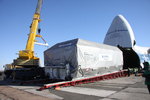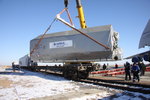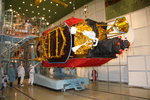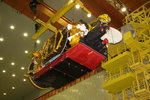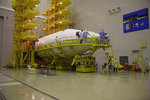Media Advisory: ILS Proton to Launch Astra 2G
Payload: ASTRA 2G communications satellite
Eurostar E3000 Platform
Separated spacecraft mass: ~6,020 kg
Launch Vehicle: Proton M/Breeze M
705,000 kg (1,554,000 lb), including payload
58.2 m (191ft)
Launch Date: November 28, 2014
Launch Time:
03:24:33 Baikonur
00:24:33 Moscow
22:24:33 Luxembourg and CET (27 Nov)
21:24:33 GMT (27 Nov)
16:24:33 EDT (27 Nov)
Launch Site: Baikonur Cosmodrome, Kazakhstan, Launch Pad 39
Launch Customer: SES, Luxembourg
Satellite Manufacturer: Airbus Defence and Space
Launch Vehicle Khrunichev State Research and Production Space Center,
Manufacturer: Russia
Launch Services
Provider: International Launch Services, USA
Satellite Use: ASTRA 2G is the third spacecraft of a three satellite investment program (ASTRA 2E, 2F, and 2G) that SES contracted with Airbus Defence and Space in order to provide replacement as well as incremental satellite capacity in the orbital arc of 28.2/28.5 degrees East. ASTRA 2G carries 62 Ku-band transponders as well as 4 Ka-band transponders. The different beams provide wide coverage over the UK and Ireland, Europe and West Africa.
The ASTRA 2G satellite will also support SATMED, an e-health platform conceived by SES and supported by the Luxembourg Government and the Ministry for Cooperation and Humanitarian Action is a satellite based communication solution aimed to improve public health in emerging and developing countries.
Satellite Statistics: __62 Ku-band transponders
__4 Ka-band transponders, including 1 interconnect
__Planned orbital location: 28.2/28.5 degrees East longitude
__Anticipated service life: 15 years
Mission Profile: The Proton M launch vehicle, utilizing a 5-burn Breeze M mission design, will lift off from Pad 39 at Baikonur Cosmodrome, Kazakhstan, with the ASTRA 2G satellite on board. The first three stages of the Proton will use a standard ascent profile to place the orbital unit (Breeze M Upper Stage and the ASTRA 2G satellite) into a sub-orbital trajectory. From this point in the mission, the Breeze M will perform planned mission maneuvers to advance the orbital unit first to a circular parking orbit, then to an intermediate orbit, followed by a transfer orbit, and finally to a geosynchronous transfer orbit. Separation of the ASTRA 2G satellite is scheduled to occur approximately 9 hours, 12 minutes after liftoff.
Target Orbit Perigee: 4,163 km
at Separation: Apogee: 35,736 km
Inclination: 23.0 degrees
Spacecraft Separation: Approximately 9 hours, 12 minutes after liftoff
ILS Mission Statistics: _7th Proton launch in 2014
_2nd ILS Proton launch in 2014
_86th ILS Proton Launch Overall
_24th SES Satellite Launched on ILS Proton
_18th Airbus Defence and Space Satellite Launched on ILS Proton
Live Broadcast: The live launch broadcast will begin approximately 20 minutes before lift-off.
Webcast stream seen can be seen at:
http://astra2g.imgondemand.com/
Live streaming will begin approximately 10 minutes before liftoff.
ilslaunch.com
